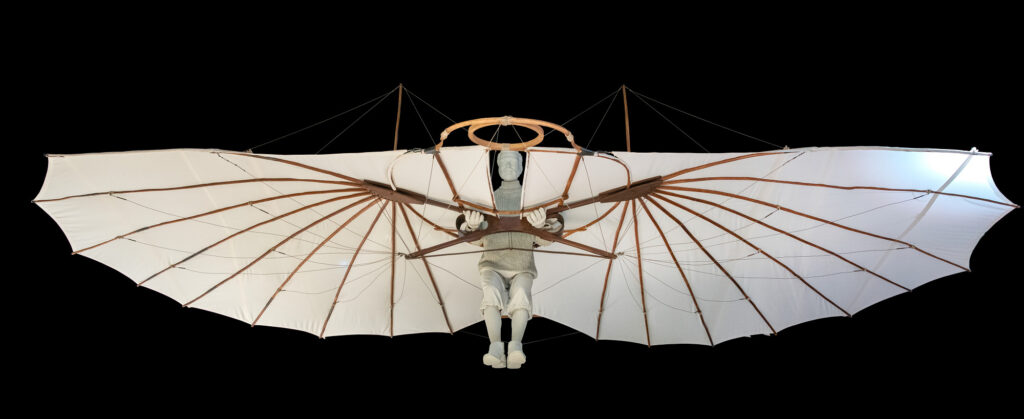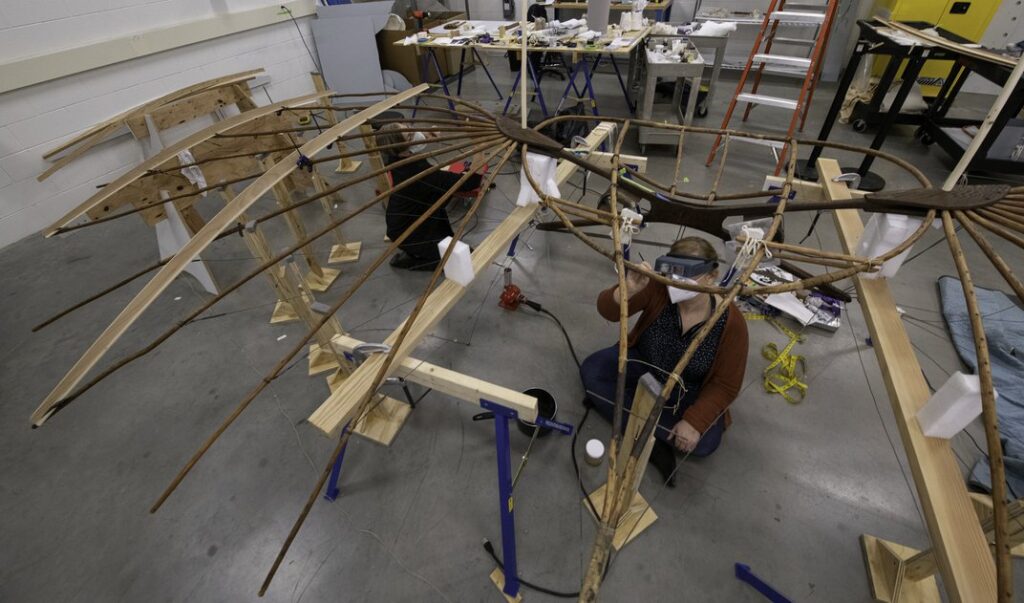Ring 1: WHAT’S OLD IS NEW
“Re-evaluating the Lilienthal Glider: Where Conservation Meets Restoration””
Presented by Deborah Parr, Conservator at the National Air and Space Museum, Smithsonian Institution
Summarized by Jones Kelly, Frame Conservation Technician, National Gallery of Art
Deborah Parr presented a treatment of a nineteenth-century glider in the collection of the Smithsonian National Air and Space Museum (NASM) for the 2023 Annual 3-Ring Circus. Parr began her presentation by providing relevant historical information, then she shared her research and treatment process.

Referred to as Glider #8, the aircraft was designed and built by early aeronautical engineer Otto Lilienthal. A pioneer in the field of aeronautics, Lilienthal left a lasting impression with his contributions, going on to inspire future developments of the field. Throughout the mid-to-late nineteenth century, Lilienthal conducted research into the aerodynamics of bird flight, then applied this data to his experimentation with the creation of a monoplane glider. Glider #8 was built by Lilienthal between 1895 and 1896, where it was subsequently purchased by William Randolph Hearst. Hearst then demonstrated the use of the glider in a highly publicized media event, likely to boost circulation of his own newspaper, which made the glider an item of interest for collection into the National Air and Space Museum.
Following a museum-wide de-installation prior to renovations, Parr and her colleagues were presented with the opportunity to study and conserve Glider #8. Further research was conducted when the initial visual examination revealed previously overlooked elements of the glider, such as parts that were removable and could be exchanged, as well as previous repairs and replacement parts. Accession documents provided information on the glider’s history of repairs made in 1906, 1919, the mid-20th century, as well as a complete refurbishment made in 1967. These repairs included replacements of the original fabric and the entire tail section, the addition of incorrect attachments, as well as changes to the rail placement. The first repairs took place in 1906, after a documented crash while in the possession of Hearst.
Next, there was the question of which era to restore the gilder to, how many of these added elements should be retained and how many replaced? Parr described her approach to treatment, noting the difference between the “relative goals” and “ethical goals” of conservation. Glider #8 highlights the tension felt when preserving the history of an object could be at odds with communicating accurate information with the public. Parr explained that the inaccuracies represented by various treatments of the past contradicted and obscured Lilienthal’s design, and that by leaving these elements in place an incorrect depiction of the gilder could misinform the general public. As only one of five remaining gilders created by Lilienthal, its structure is important to research and the general understanding of early aviation, making authenticity to its original form that much more important. Ultimately, Parr explains, it was decided to “maximize conservation efforts” while returning Glider #8 to its state in 1906, preserving its damage from use, but correcting post-use damage and repairs.

A faithful restoration required consulting historical photographs, aviation experts, researchers, and other allied professionals to create historically accurate reproductions of hardware and other fixtures. For example, while recreating the original canvas, they worked in collaboration with the Deutsches Museum to identify the material and weave structure. Parr and her colleagues successfully cleaned and stabilized the object while also restoring technically relevant elements to provide a more historically informed version of Glider #8.
This talk was not recorded, but the restored Glider #8 is on display within the Early Flight gallery at the National Air and Space Museum on the National Mall!